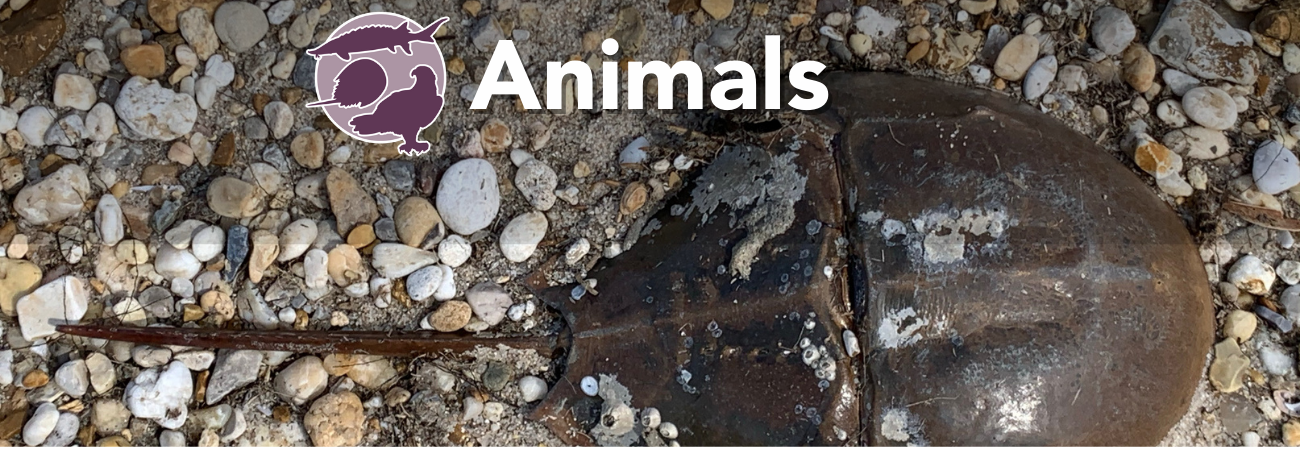
Osprey

Have you ever seen an osprey in action?
These majestic birds, with their striking black and white plumage and keen hunting skills, are a sight to behold. Ospreys hold a special place in the Delaware Estuary. These large birds of prey are also a compelling tale of resilience and rebound. Having endured substantial population declines in the mid-20th century due to harmful contaminants in the environment, they’ve since recovered with prominence. Ospreys are a great indicator species because they feed primarily on fish. If the fish species are healthy, the birds will thrive. This section discusses how Osprey overcame decline and reviews how populations are faring.

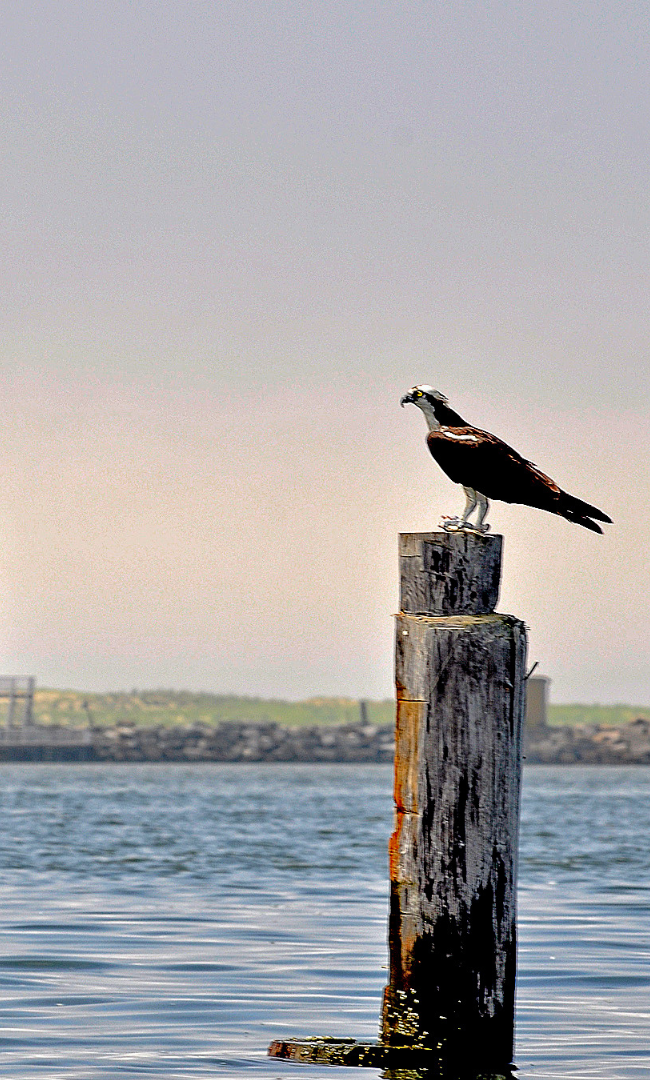
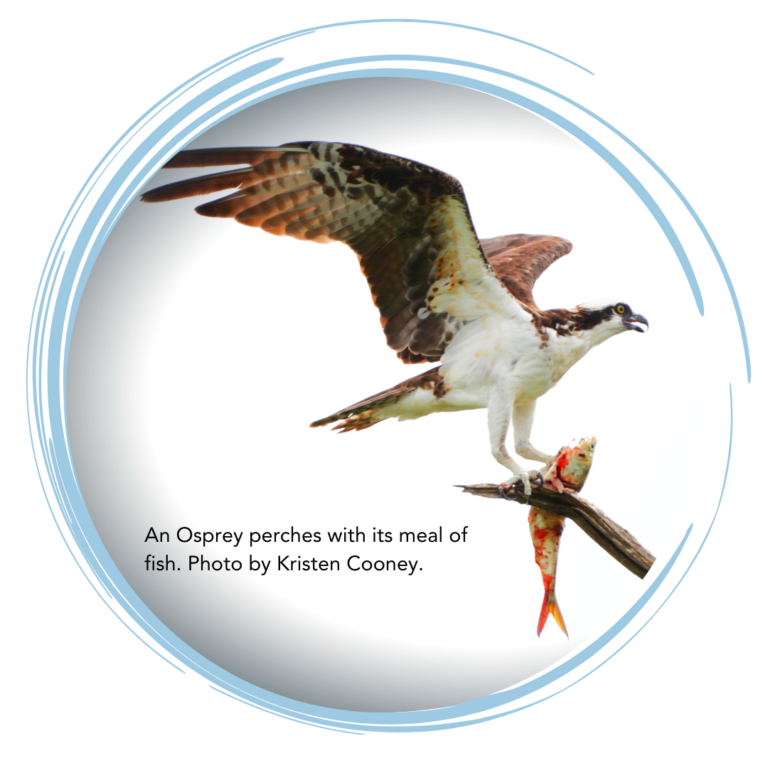
Ospreys are a unique type of hawk, known for their impressive hunting techniques. They dive feet-first into the water to catch fish swimming near the surface. Thanks to their oily feathers, broad wings, and unique reversible toes, these birds of prey can effortlessly emerge from the water, often carrying a large fish in their talons. These successful hunters can make a catch 25 to 70 percent of their dives, taking just 12 minutes to fish out their meal.
Every March, Ospreys make their way to the Delaware Estuary, with their nesting season starting in April. These large birds (roughly the size of a goose) build colossal nests on top of trees, utility poles, and specially erected nesting platforms. They’re big on recycling, reusing nests, and expanding them each year as wide as 6 feet and as deep as 13 feet – about the size of your average car.
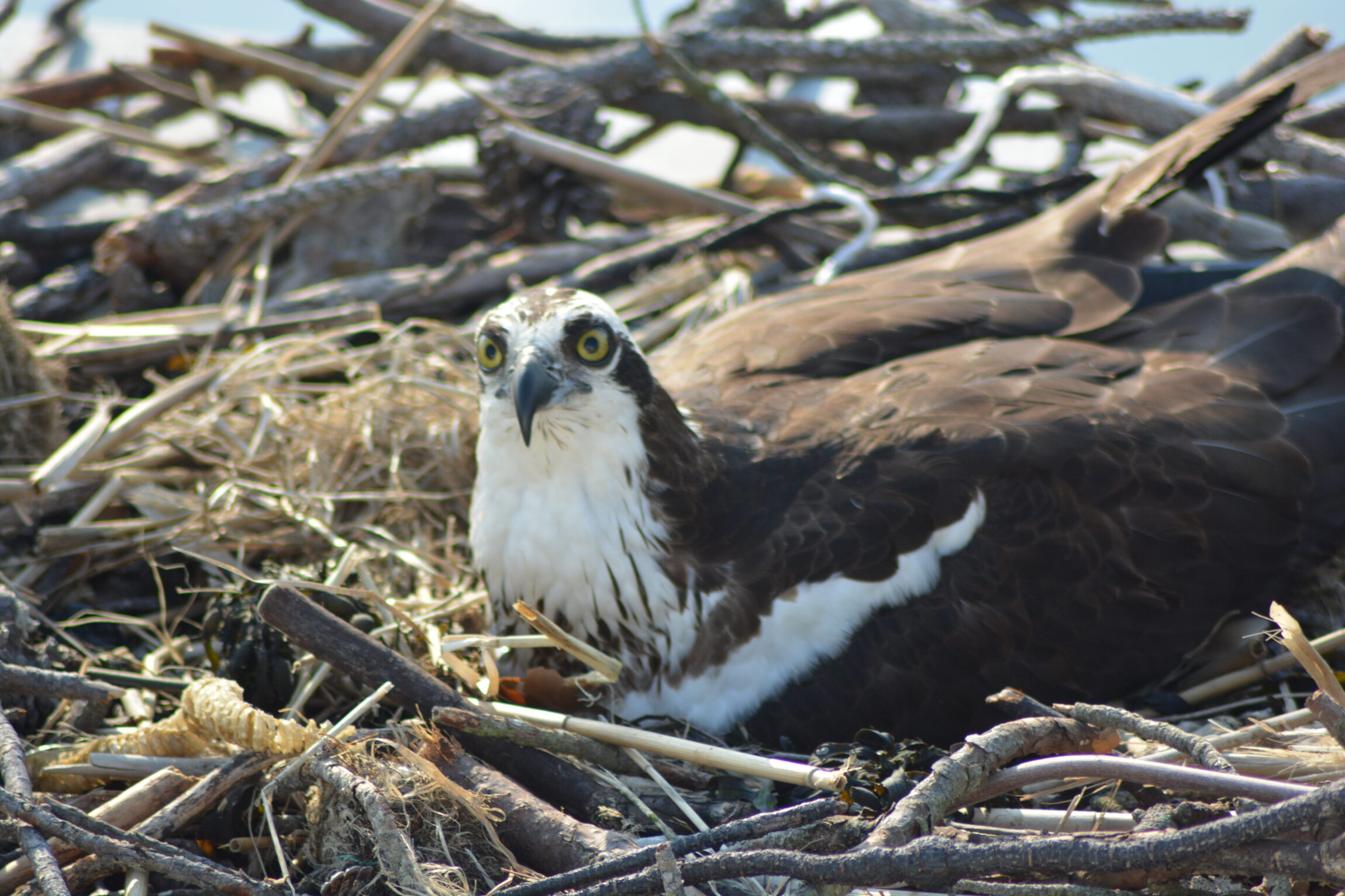
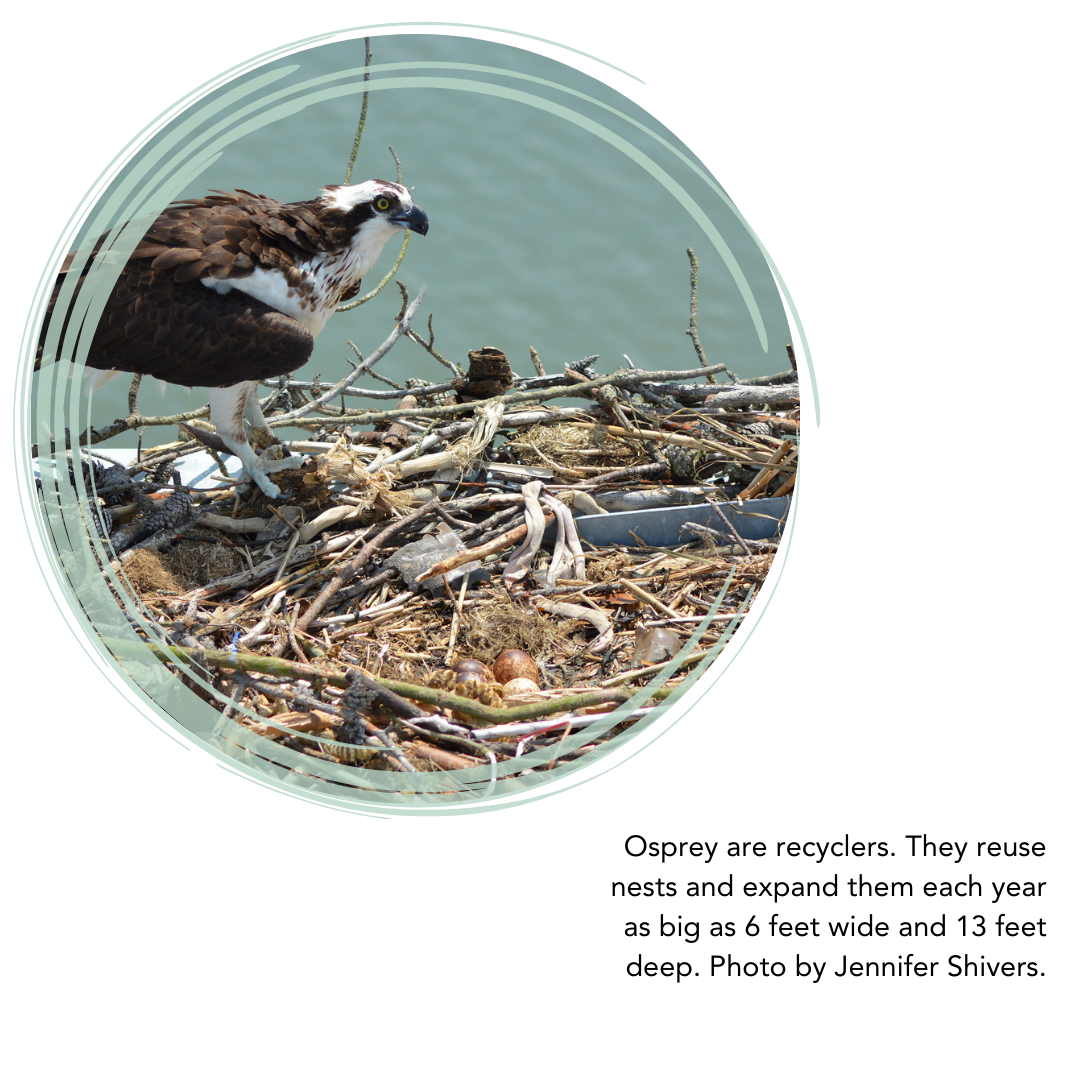
Magnificent as they are, ospreys face several challenges. Fledgling, or baby, ospreys are preyed upon by bald eagles and great horned owls, and raccoons occasionally take their eggs. Moreover, other birds of prey are known to take over osprey nests and rob them of their freshly caught fish.
Ospreys face challenges from humans as well. Historically, the osprey population in the Northeast United States faced significant declines from the 1950s through the 1970s due to exposure from DDT (a pesticide used for mosquito control) and PCBs (polychlorinated biphenyls, a man-made chemical found in industrial equipment) building up in the food chain. Ospreys became exposed to these contaminants by eating fish with chemicals in their systems. This exposure negatively affected their breeding success, with populations remaining low until the 1990s. At that time, the introduction of stricter regulations to reduce the use of these harmful contaminants. Osprey eggs in the Delaware Estuary were transported to nests in New Jersey and the Chesapeake Bay to supplement populations there.
As a result, osprey populations in the Delaware Estuary have shown significant improvement over the last few decades. Osprey recovery efforts have been so effective that these birds have been removed from the endangered species list in Delaware and Pennsylvania.
However, the threat is far from over. While stricter regulations have curtailed the use of legacy contaminants like DDT and PCBs, new types of chemicals called emerging contaminants are raising concern for their potential environmental impacts. While exposure levels to these emerging contaminants are below the thresholds currently believed to cause concern, monitoring ospreys continues to be crucial in understanding the potential long-term effects of these substances on the food chain and ecosystem.
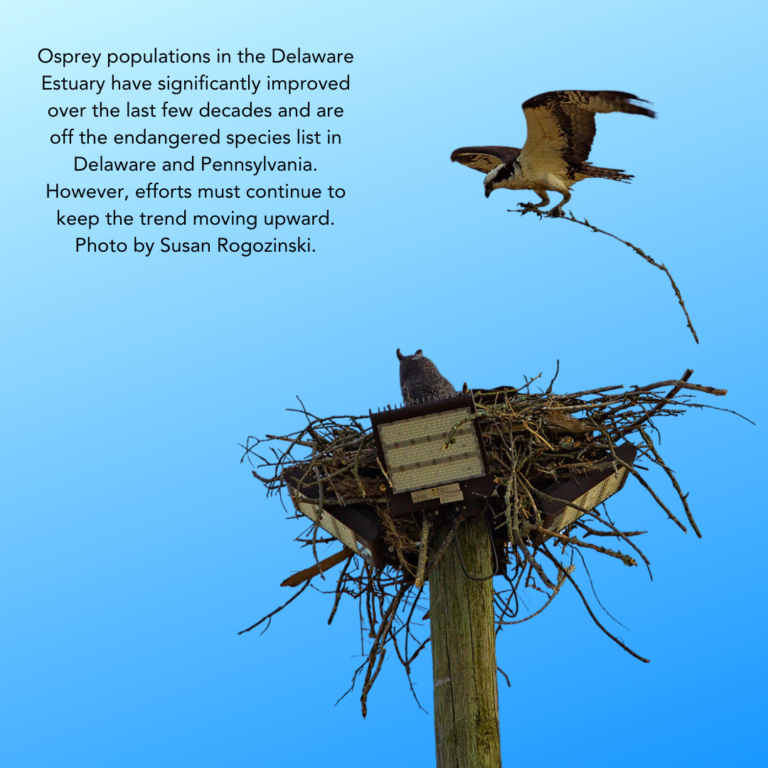

+Volunteers are crucial for monitoring nests and the success of Osprey populations. To get involved, check out the Osprey Watchers and help monitor nest sites near you.
+You can also contribute data about any bird species you see by contributing to a community science program like eBird.
+If bird watching is not your strength, you can still lend a hand by helping to build and maintain nesting sites near you, or learn bird calls with apps like Merlin Bird ID.
What is Being Done?
Below are a few highlights of work to support the monitoring and management of osprey populations throughout the watershed
New Jersey Fish and Wildlife and the Conserve Wildlife Foundation of New Jersey conduct annual surveys of osprey nesting in about ten regions of the state.
Permitting coordination to mitigate impacts of permitted activities in the Commonwealth of Pennsylvania is done with the PA Game Commission via the Pennsylvania Natural Diversity Index database.
Building Connections:
How do osprey recovery efforts contribute to the strategies and goals outlined in the Delaware Estuary Program’s Comprehensive Conservation and Management Plan?
CCMP STRATEGY W2.3: Support adaptive management and reporting of pollution reductions
This osprey indicator status report is based on research compiled in the 2022 Technical Report for the Delaware Estuary and Basin (2022 TREB). Please refer to this document for more information.


Did you know the Delaware Bay is crawling with a prehistoric creature?
Atlantic horseshoe crabs (Limulus polyphemus) are marine arthropods – not true crabs like blue crabs or hermit crabs, but more akin to spiders and scorpions. They live on the ocean floor and have a lineage dating back 445 million years — older than the dinosaurs. These animals live on the east coast of the United States and Mexico, with the largest population worldwide in the Delaware Bay. They contribute significantly to the bay’s food chain and human industries. Historically, the fishing and medical industries overharvested horseshoe crabs, but populations have stabilized in recent years. This section discusses the negative influences on horseshoe crab populations, how these animals play an essential role in the food chain, and what people are doing to ensure their populations rebound.

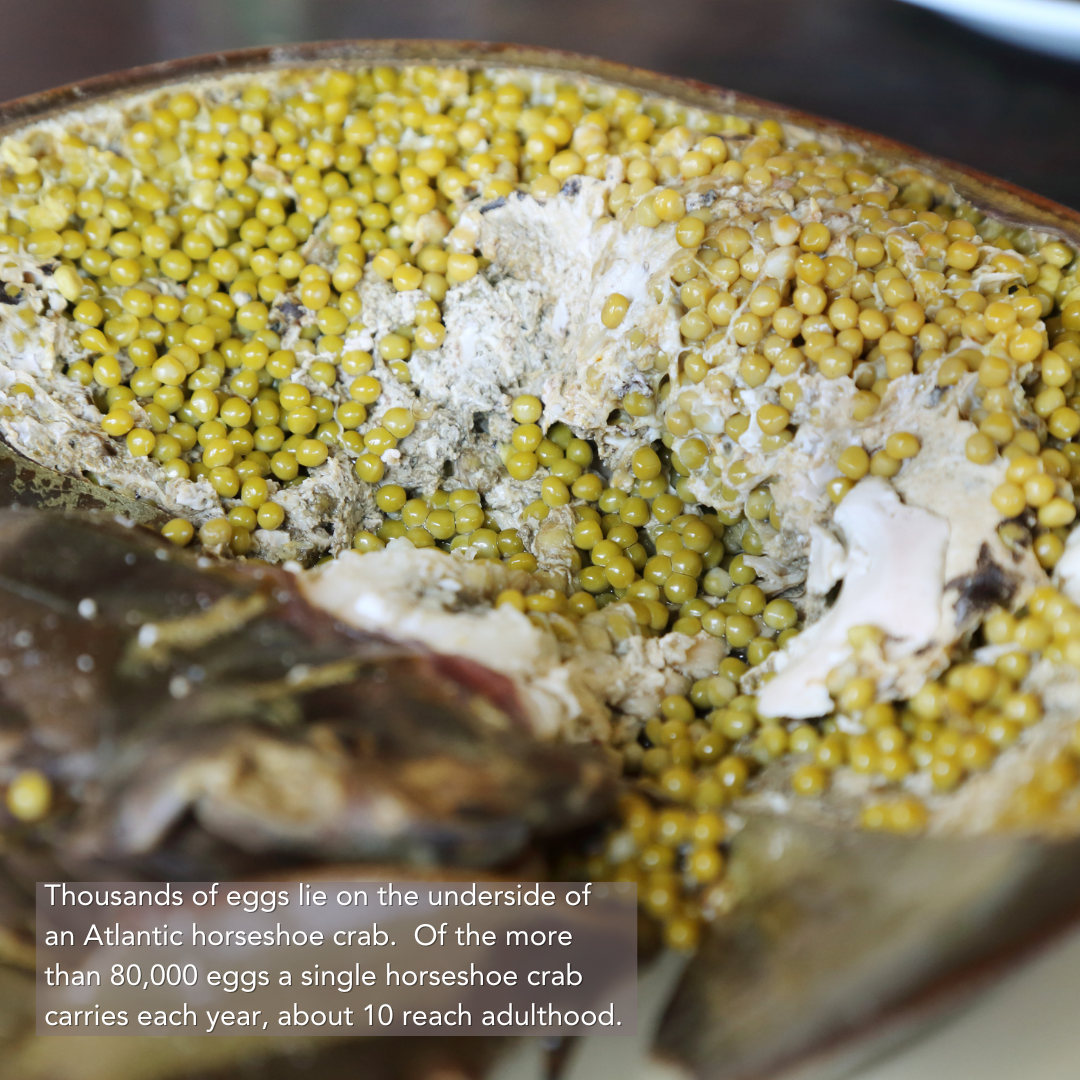
Every spring, as water temperatures rise, these ancient mariners migrate to spawn on the sheltered, sandy beaches of the Delaware Bay. The females carry around 88,000 eggs and lay around 4,000 eggs per nest, depositing them about 6 inches into the sand to protect them from the reach of most shorebirds. This bounty of eggs provides a valuable food source for migratory birds like the red knot. The red knot’s survival hinges on the availability of horseshoe crab eggs, which deliver the energy-rich food critical for their 9,000-mile spring migration from Argentina to the Arctic Circle.
Of the thousands of eggs a single horseshoe crab lays each year, only about 10 will survive to adulthood. Juvenile crabs remain near their birthplace but progressively move into deeper waters as they mature. Notably, horseshoe crabs molt, shedding their old shell to accommodate their new growth. They reach reproductive maturity at 10 years and can live more than 20 years.
Humans have valued horseshoe crabs throughout history for diverse uses such as fertilizer production, livestock feed, and fishing bait. They’ve also played a vital role in the biomedical industry, including COVID-19 research. While most animals have red blood from iron, horseshoe crabs have blue blood containing copper. Scientists use the blood to produce Limulus Amebocyte Lysate (LAL), which they use to test medical products for bacterial contamination. However, this blood collection process can be fatal to crabs. The biomedical industry has explored synthetic alternatives to LAL to reduce its impact on the horseshoe crab population. The adoption of synthetic LAL by the commercial industry is pending product development and validation.
Overharvesting significantly depleted the number of horseshoe crabs in previous years. Nearly a million crabs were harvested annually between the 1850s and 1920s. Thankfully, since the early 2000s, harvest regulations and restrictions by the Atlantic States Marine Fisheries Commission (ASMFC) have helped stabilize the Delaware Bay horseshoe crab population. The ASMFC conducts a stock assessment every decade to evaluate the population, and the most recent one in 2019 found the population to be stable.
Despite these improvements, the recovery of the horseshoe crab populations is still gradual due to their long lifespan and delayed reproductive maturity. An ongoing debate exists on whether current population levels are sufficient to support the needs of migratory shorebirds. Yet, recent data indicates that better management measures and reductions of their use as bait have increased horseshoe crab numbers.
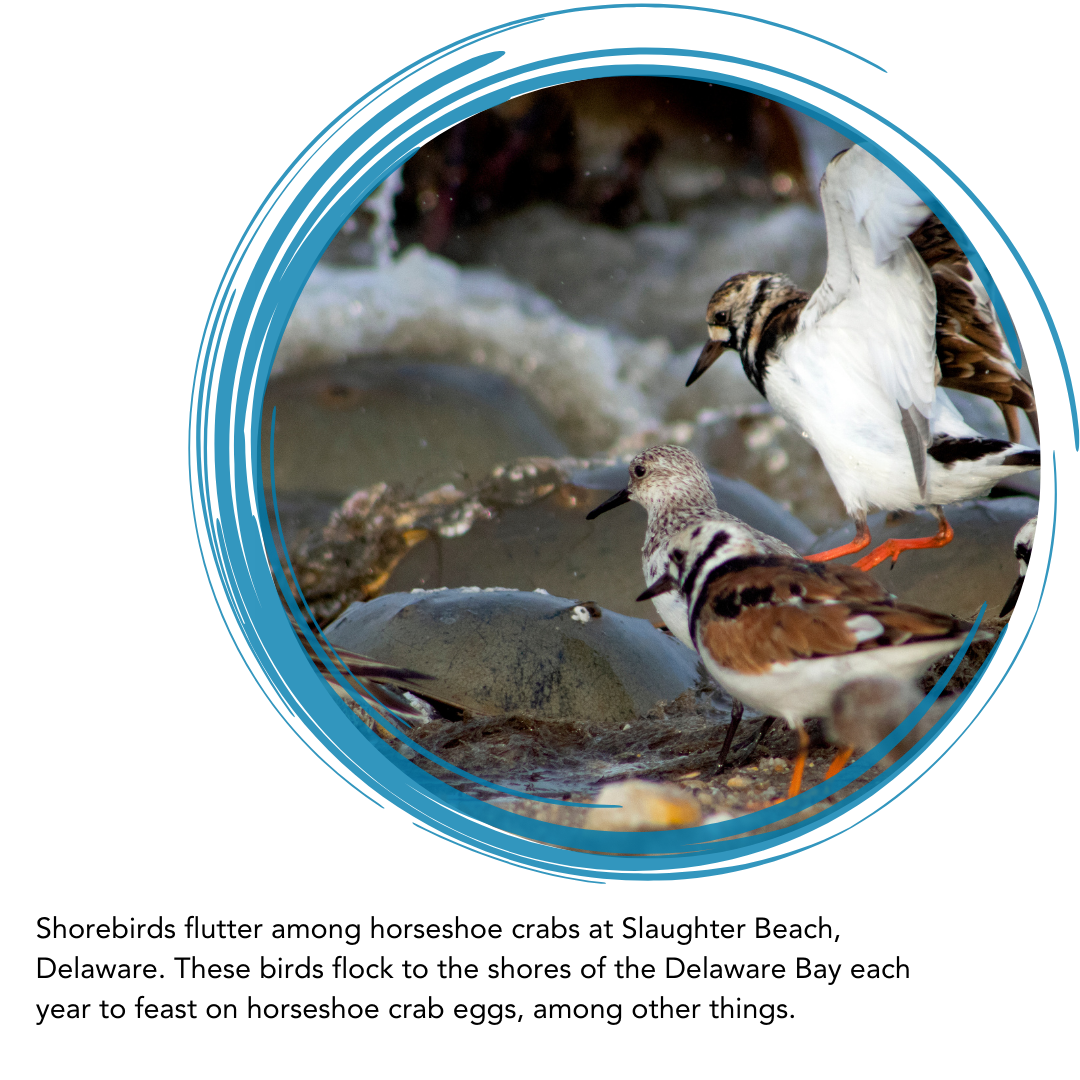
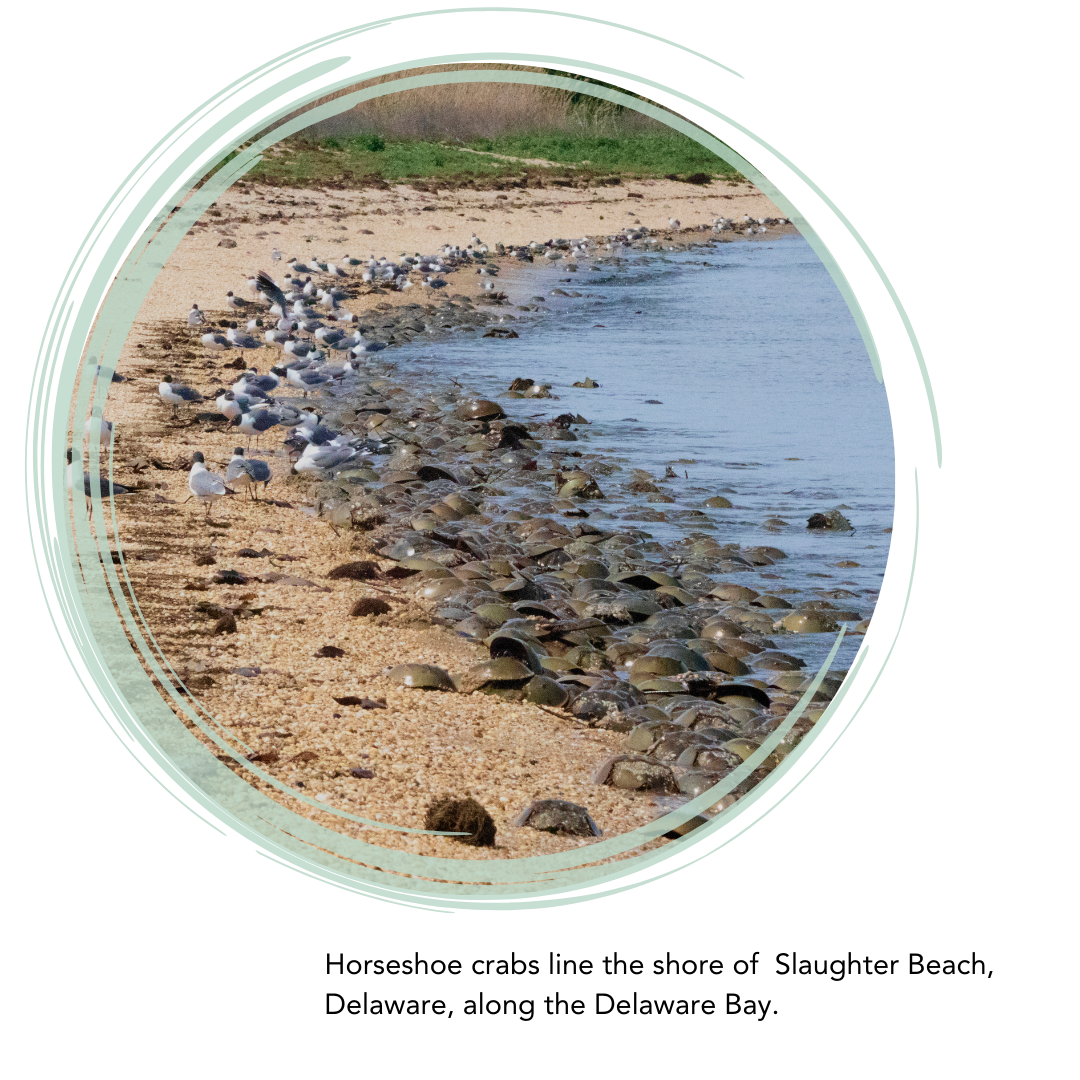

+Flip overturned horseshoe crabs that you find on the beach. DO NOT flip them by their tail. Use the edge of their shell.
+Support coastal restoration efforts to improve horseshoe crab habitat.
+Participate in community science that supports research.
+Learn more about horseshoe crab community research opportunities
What is Being Done:
Several organizations, including the Atlantic States Marine Fisheries Commision (ASMFC) and National Marine Fisheries Service, are actively working to ensure the horseshoe crab’s continued survival.
The establishment of the Carl N. Shuster Jr. Horseshoe Crab Reserve, the reduction of horseshoe crabs as bait, and the biomedical industry’s efforts to minimize stress on crabs during blood collection represent efforts to aid horseshoe crab population recovery. Through continued diligence, we aim to keep the Delaware Estuary a thriving home for horseshoe crabs, preserving this unique species for generations.Building Connections:
CCMP STRATEGY H3.4: Protect and restore horseshoe crabs and their habitat
This horseshoe crab indicator status report is based on research compiled in the 2022 Technical Report for the Delaware Estuary and Basin (2022 TREB). Please refer to this document for more information.

What prehistoric fish has heavy armor and can grow to 800 pounds?
The Delaware Estuary is home to an ancient giant, the Atlantic sturgeon. With a lineage dating back more than 250 million years, this prehistoric giant is a living testament to a time when dinosaurs roamed the earth. These majestic and enormous fish that meander riverbeds can grow as long as 15 feet. Fortunately, their long survival story is coming to a turning point, as sturgeon are recovering from harsh threats brought upon by human activity. This section discusses the journey of the sturgeon and the challenges they’ve faced in recent centuries in their quest to endure.
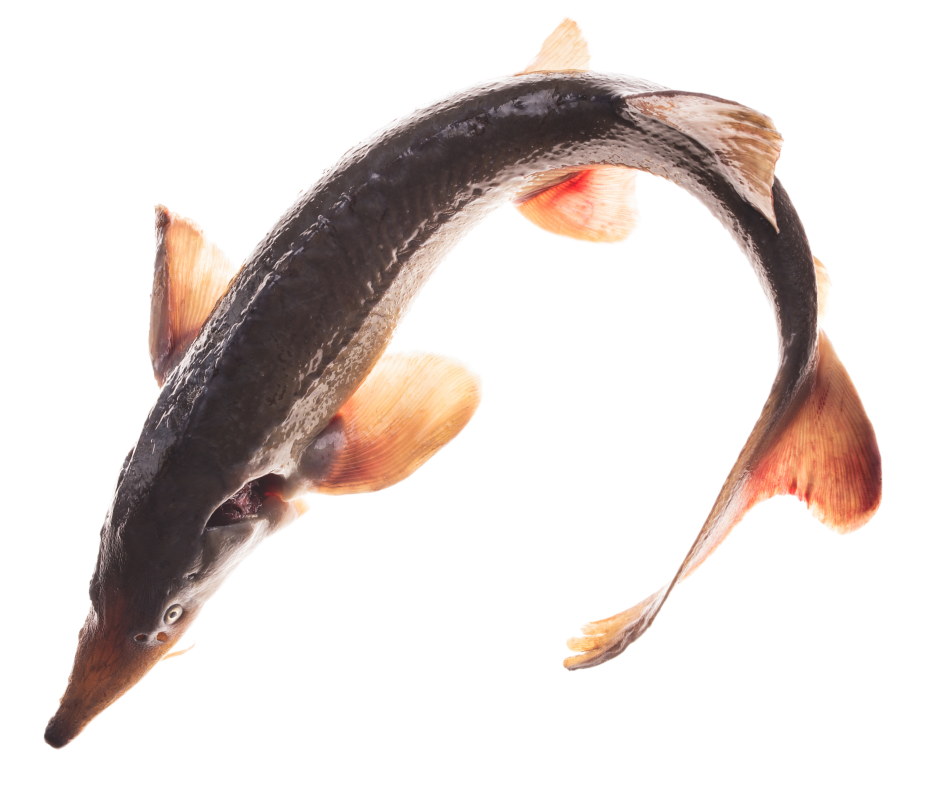
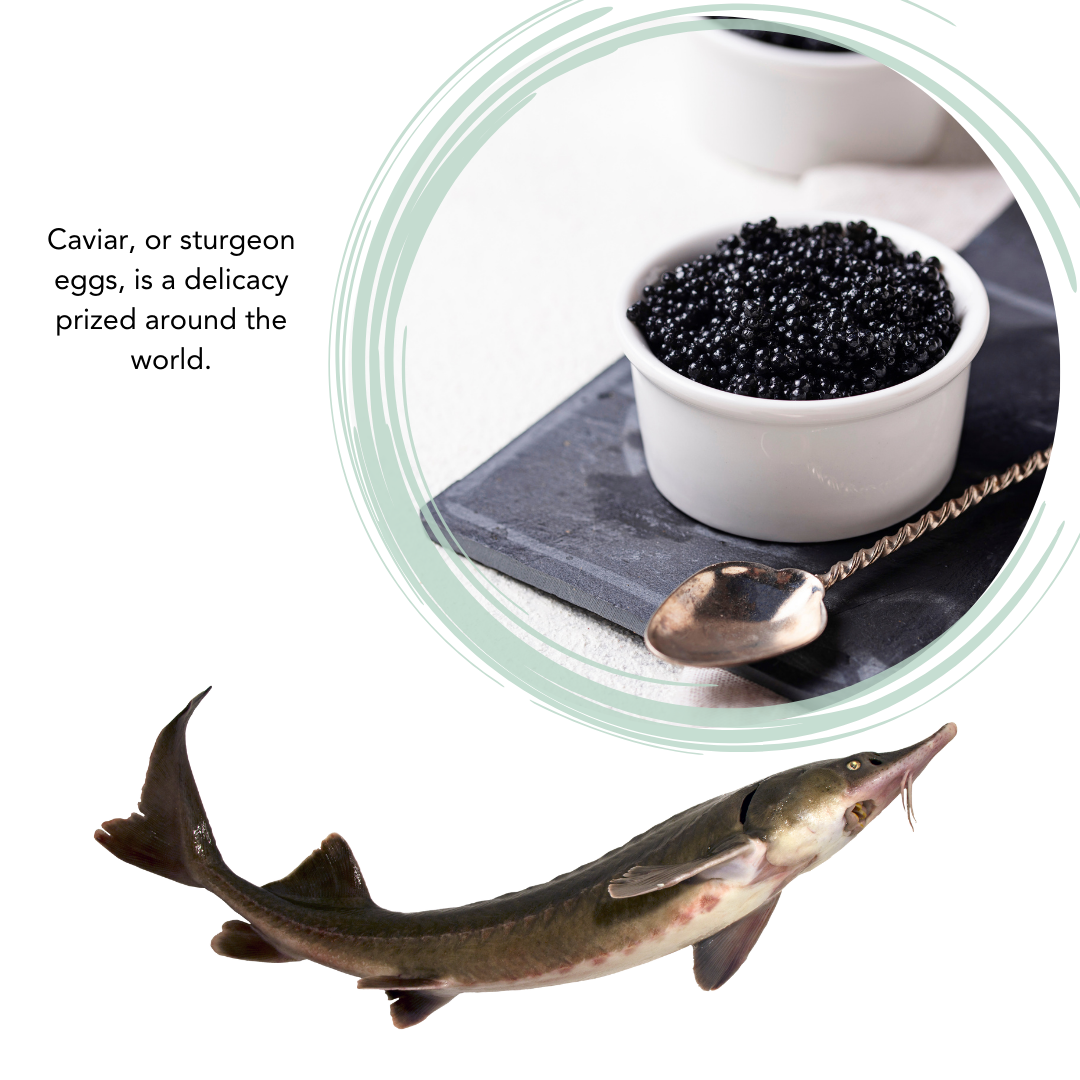
Mature Atlantic sturgeon migrate from the sea to freshwater to spawn. Spawning occurs in the fresh waters of the Delaware River, where the bottom is hard and rocky. Female sturgeon take 15 years to reach reproductive maturity and spawn every one to five years, making population growth slow.
Sturgeons’ ability to survive for 250 million years is no small feat. These amazing fish have withstood major climatic changes before, but with humans in the picture, they have faced various dangers. Sturgeons mature into highly valued commercial fish, prized for their meat and eggs. The eggs, more famously known as caviar, are highly valued around the globe. Industrial development, ship strikes, overharvesting, and poor water quality threaten these fish further to extinction. The Atlantic Sturgeon and its cousin, the Shortnose Sturgeon, are federally endangered under the Endangered Species Act.
In the late 1800s, the Atlantic sturgeon population was abundant, with the Delaware River sturgeon outnumbering those from all other estuaries and rivers combined. This past abundance tells us that the Delaware River has the potential to support a large population of sturgeons.
Sturgeons require clean, well-oxygenated waters to thrive. Oxygen levels in the river can drop to critically low levels, especially in warmer months, creating what is known as hypoxia, which could affect the survival and growth of young sturgeons. Recent data shows a growing number of young sturgeon in the Delaware Bay, indicating a potential population increase. Growing reports of dead sturgeon, mostly from ship strikes, could also suggest population growth.
Researchers believe that the low oxygen levels in the Delaware River, primarily due to pollution and hypoxia, have significantly hampered the sturgeon’s efforts to recover their population numbers naturally. Despite these challenges, studies and surveys indicate consistent successful reproduction among sturgeon, offering hope for the future.


+Support sustainably-sourced caviar to help protect sturgeon species worldwide.
What is Being Done:
The Division of Fish and Wildlife, under Delaware’s Department of Natural Resources and Environmental Control, is part of a multi-state collaborative project to study and manage fishing. The division conducts surveys of Atlantic Sturgeon in the Delaware River to monitor population levels and evaluate spawning success.
Building Connections:

Oysters are more than just a delicious seafood delicacy.
These salty gems are ecosystem engineers, creating underwater paradise in the form of reefs that provide habitat for themselves and many other species as they grow in mounds on top of one another. They also enhance the quality of their environment by filtering large amounts of water. This section dives into the oyster life cycle, their contributions to biodiversity, the threats they face, the importance of careful mana
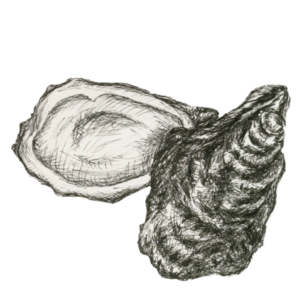

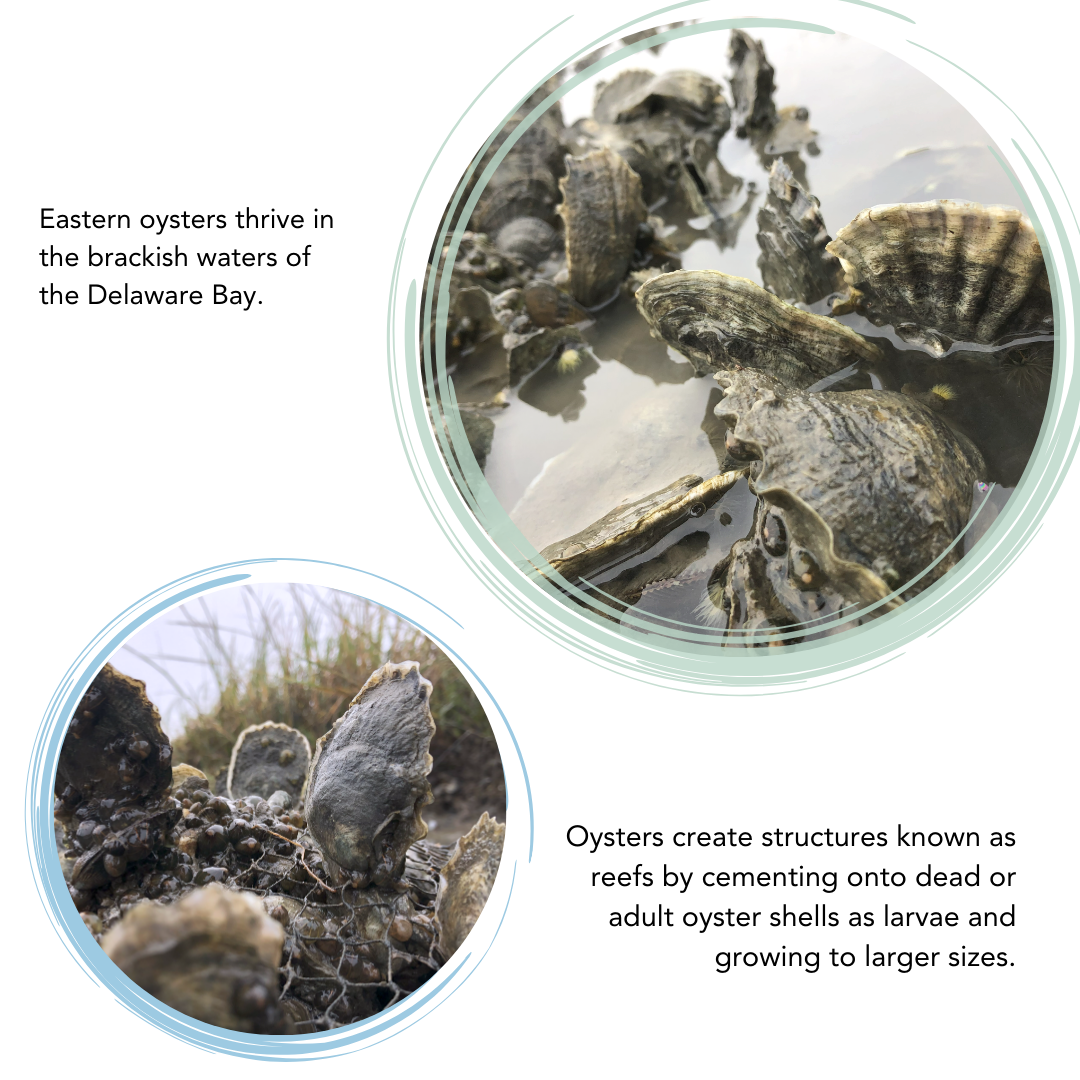
Chances are you’ve come across oysters’ distinct shells, whether you’ve enjoyed them as a delicacy at a restaurant or stumbled upon them while wandering your local beach. However, there’s a lot more to these little marvels than meets the eye. Dubbed “ecosystem engineers,” oysters significantly contribute to the health and vibrancy of underwater habitats, especially in places like the Delaware Bay.
Oysters thrive in the brackish waters of the Bay, where the freshwater of the Delaware River meets the saltwater of the ocean. They create structures known as reefs, formed by cementing themselves onto dead or adult oyster shells as larvae and growing to larger sizes. In doing so, oysters provide a home for diverse saltwater creatures like barnacles and anemones. These reefs form bustling underwater cities that attract birds, fish, and many invertebrates.
Healthy oysters are vital to our ecosystems, but two diseases, dermo and Multinucleated Sphere Unknown (MSX) have affected oysters in the Delaware Bay since the 1950s and the late 1980s, respectively. While the oysters have adapted to fend off MSX, dermo continues to pose a significant threat, leading to a drop in their numbers in certain parts of the Bay.
Oysters were a vital resource in the Delaware Bay for indigenous people long before the arrival of European settlers. Today, their numbers are diligently tracked and managed to sustain the seafood industry. Over the past 75 years, disease-related challenges have shaped the oyster population trend into a cycle of booms and busts. Between the 1970s and mid-1980s, the average oyster population reached 17 billion animals when disease pressure was low. Today’s 1 billion to 2 billion oyster population in the Delaware Bay serves a multi-million dollar seafood industry and is a vital indicator of the ecosystem’s overall health. Regular surveys have been conducted since 1953 to monitor disease, mortality, and harvests. Rutgers University’s Haskin Shellfish Research Laboratory in New Jersey holds an annual workshop to discuss oyster population status and trends and make recommendations for sustainable harvest levels and management improvements.
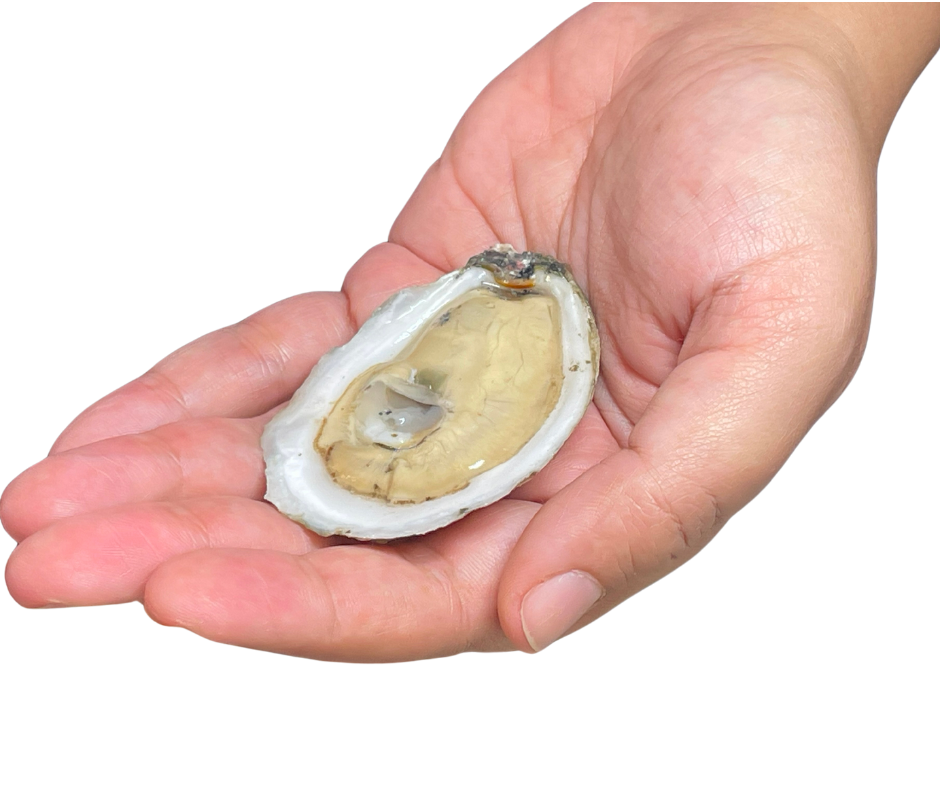

Oysters are sensitive to changes in their environment, particularly the salinity (saltiness) and the temperature of the water in which they live. Researchers pay close attention and carefully monitor these conditions to understand how oysters will perform in the future. While oyster populations are currently considered stable, continued changes to our environment, like rising sea levels and climate change, can influence where oysters may thrive and where they may suffer.
These factors make the consistent surveying of the oyster population and diseases even more critical. By tailoring management plans based on these surveys, we can better understand our region’s unique environmental conditions and population dynamics. Enhancing oyster habitats and their ability to stick to one another brings many benefits to the ecosystem and the Delaware Bay, ensuring a sustainable future for all.
What is Being Done?
PDE, as part of its oyster shell recycling program, partners with Wilmington and Philadelphia restaurants to collect used oyster shells. Volunteers bag the shells, which PDE uses for living shorelines and shellfish restoration throughout the Delaware Estuary.
For more than 30 years, Rutgers University’s Haskin Shellfish Research Laboratory has completed oyster stock assessments in the Delaware Bay. These assessments involve dredge surveys of the New Jersey-owned, naturally seeded oyster beds in the Bay.
The Delaware Bay (NJ) Shellfish Council, comprised of experienced environmental professionals familiar with the Delaware Bay shellfish industry, annually gives oyster stock recommendations.
PDE and Haskin Shellfish Research Laboratory regularly collect data about oyster bed growth along living shorelines.
Building Connections:
How does the Eastern oyster population connect to the Delaware Estuary Program’s Comprehensive Conservation and Management Plan (CCMP)?
CCMP STRATEGY H3.2: Restore oyster beds and productivity in and around the Delaware Bay.
This Eastern oyster indicator status report is based on research compiled in the 2022 Technical Report for the Delaware Estuary and Basin (2022 TREB). Please refer to this document for more information.


Did you know that natural filters live in our streams?
Freshwater mussels, often unseen residents of our freshwater creeks and rivers, are essential contributors to the health of our waterways. Around the mid-20th century, mussel populations significantly declined and have not recovered. This section discusses the captivating world of freshwater mussels, the extraordinary services they provide to our ecosystems, the significant challenges they face, and the promising measures we are adopting to secure their future.
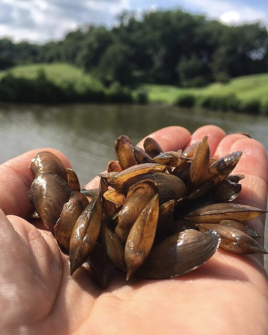
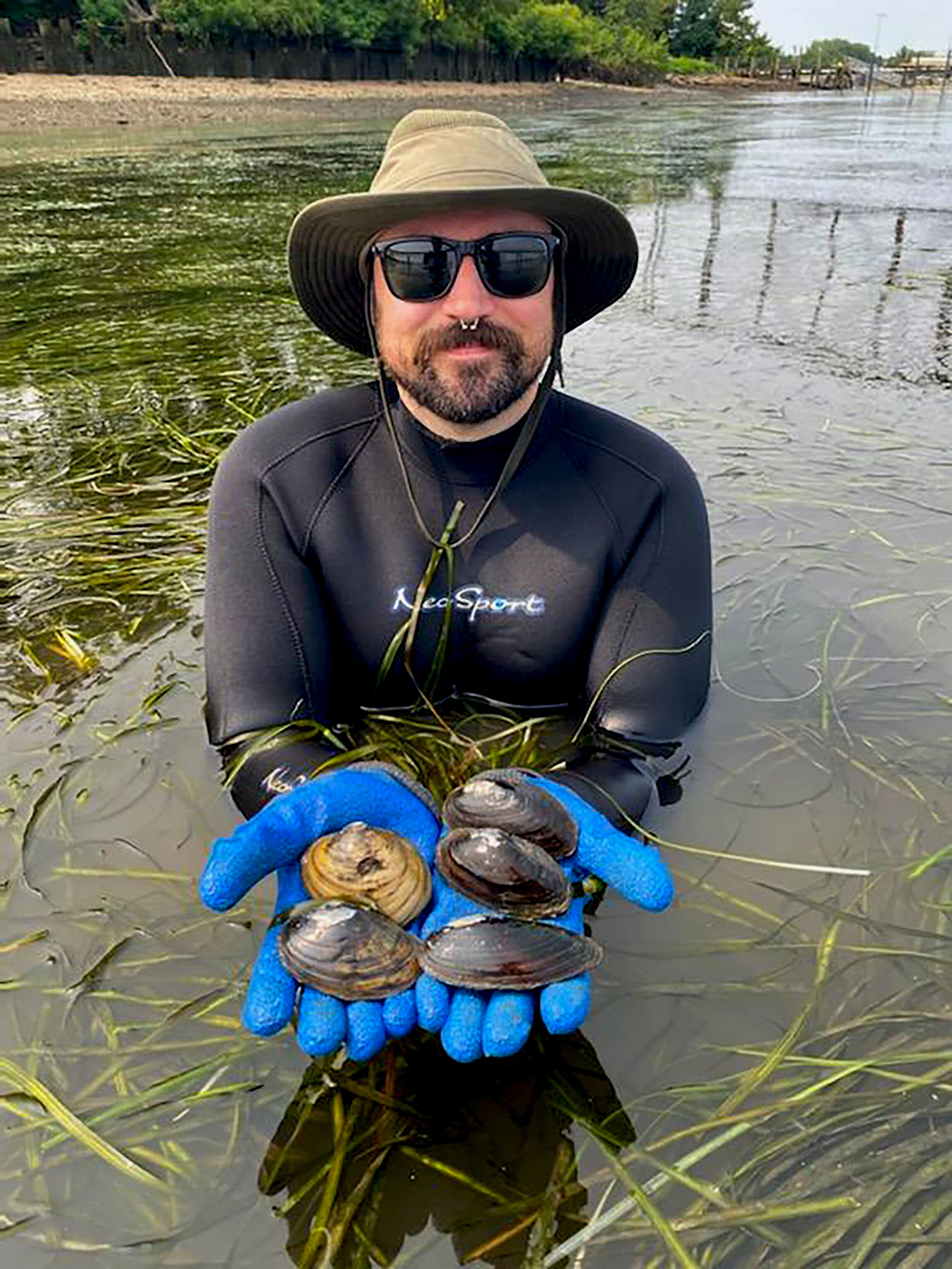
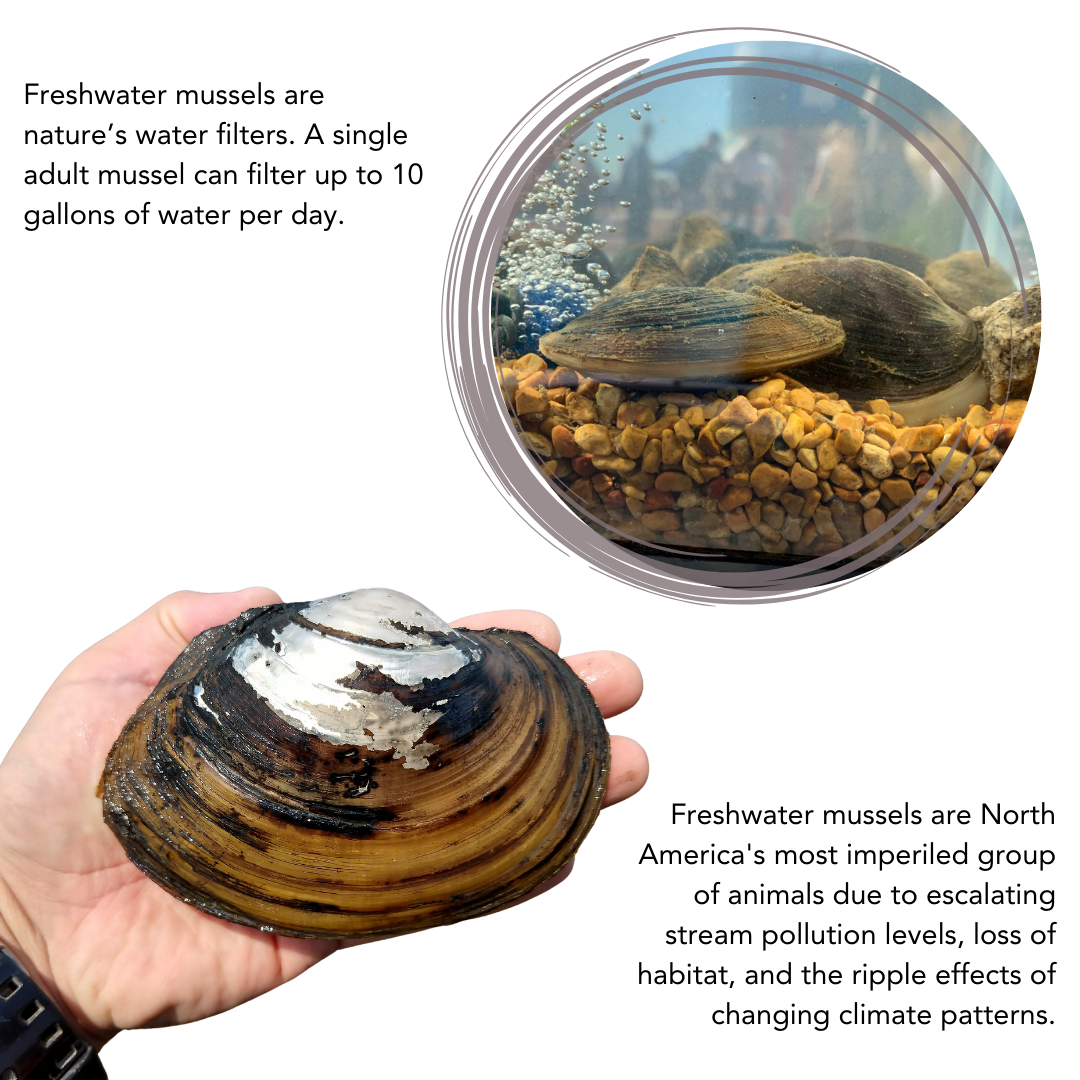
Freshwater mussels play a significant role in keeping our waterways clean. They act like tiny, living filters, sucking in particles suspended in the water. A healthy adult mussel can filter up to 10 gallons of water per day. Some mussel species can live up to 100 years. By simply existing in our streams, mussels improve water quality, promote biodiversity, and maintain a balanced ecosystem.
Unfortunately, there just aren’t enough mussels. They are the most imperiled group of animals in North American North America today due to various factors, including escalating stream pollution levels, loss of habitat, and the ripple effects of changing climate patterns. The problem is particularly severe in the Delaware River Watershed, home to 13 native mussel species.
Fish are essential to the mussel life cycle and fish migration barriers are a significant factor in mussel decline. Specific mussel species need a specific fish species to complete its reproductive cycle.
Female mussels release baby mussels, or larvae, into the water, leaving these larvae to briefly free-float until they can latch onto the gills of the correct host fish. The larvae stay on the gills for two to four weeks before eventually releasing themselves into the stream bed. Dams have lowered the abundance of fish species that mussels need for their life cycle. As a result, the biodiversity, abundance, and range of our mussel species have also drastically decreased, indicating a severe imbalance in their habitats. A decline in mussel populations signals trouble for ecosystems. Because mussels are long-lived and tend to stay in the same place, freshwater mussels serve as indicators of site-specific conditions over long periods compared to shorter-lived, more mobile animals such as insects, fish, and birds.
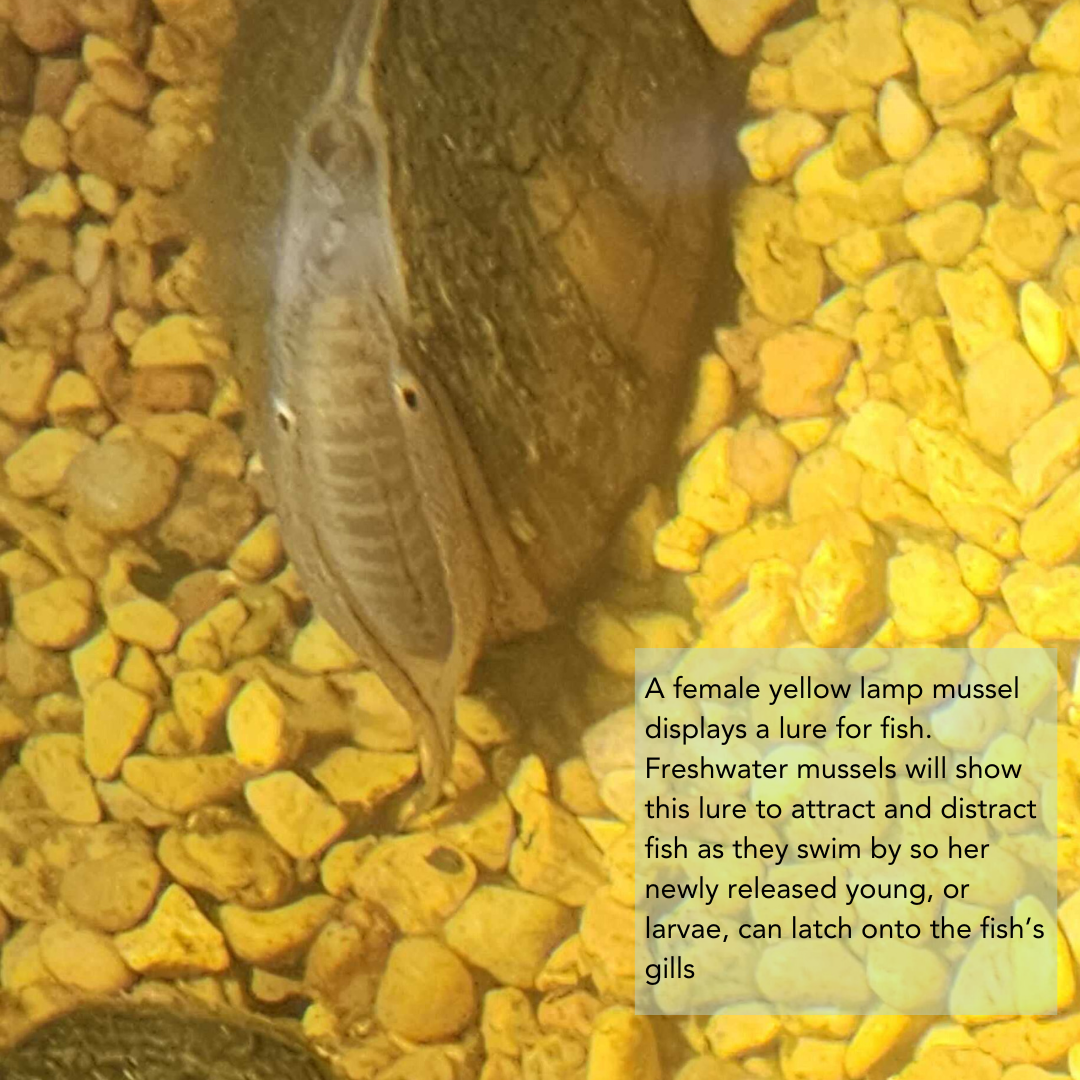
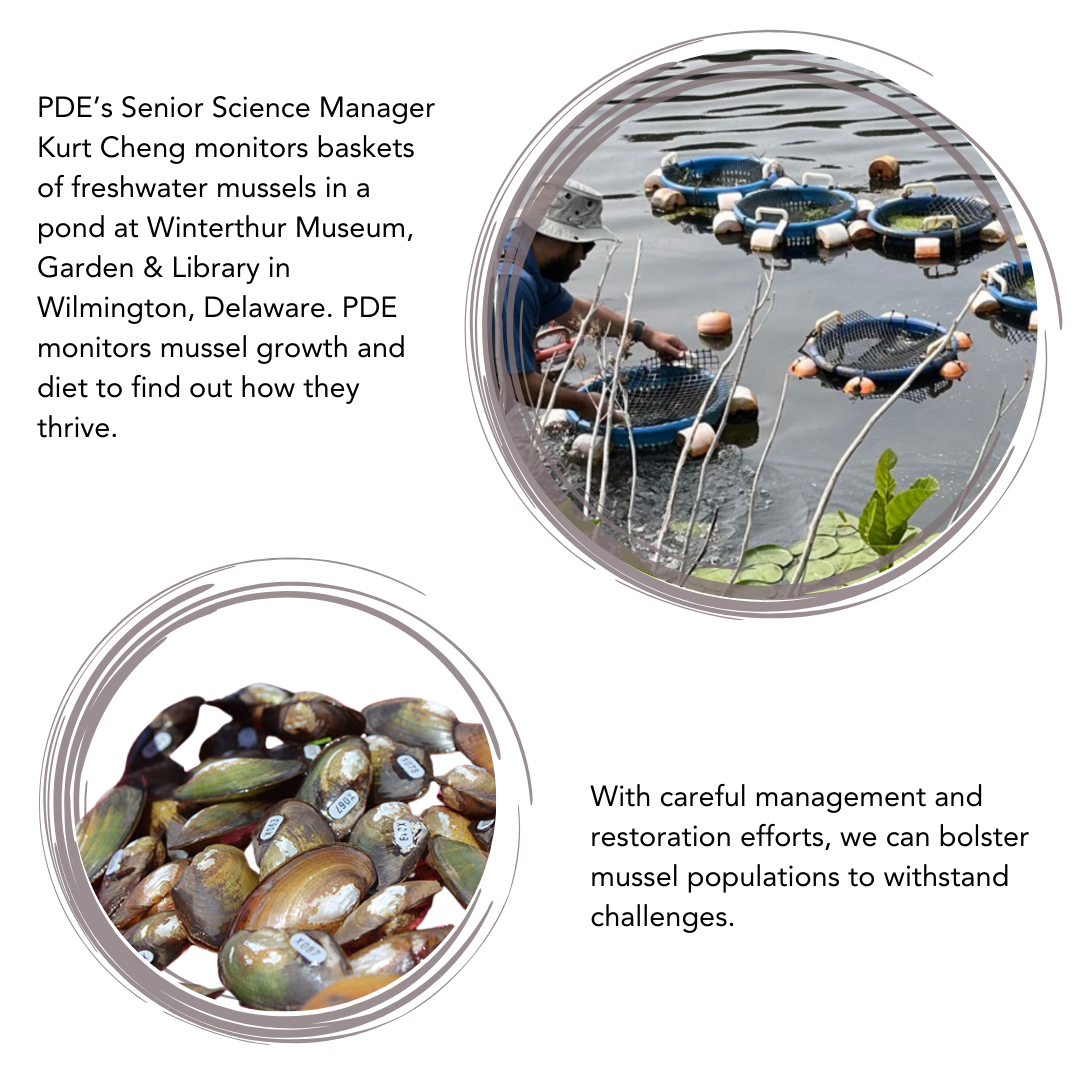
Restoring the mussel population is a multi-pronged effort. Scientists are working to propagate mussels, but it’s also essential to tackle environmental threats such as stormwater runoff, manage water quality, and encourage the removal of defunct dams to promote free fish passage in our waterways.
With careful management and enhanced restoration, we can bolster mussel populations to withstand the challenges of our ever-changing future. The measured expansion of healthy freshwater mussel populations in the Delaware River Watershed requires careful management, consideration of freshwater mussels in restoration projects, and more vigorous conservation and restoration efforts.

+Advocate for dam removal projects so fish can continue supporting the mussel species that evolved to co-exist with them.
+Plan a rainy day or school field trip to the Philadelphia Water Department’s Fairmount Water Works Interpretive Center to view the freshwater mussel hatchery exhibit. There, you will see scientists studying mussels and propagating them to increase their numbers.